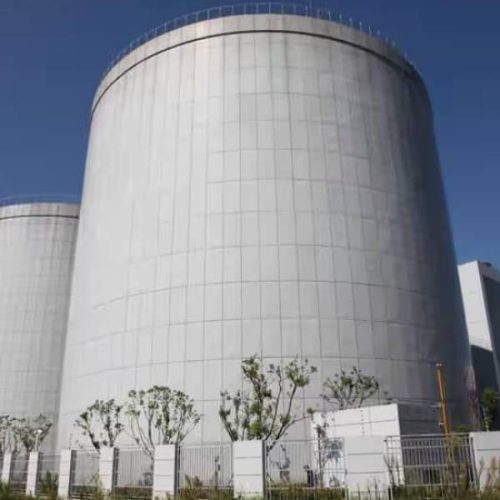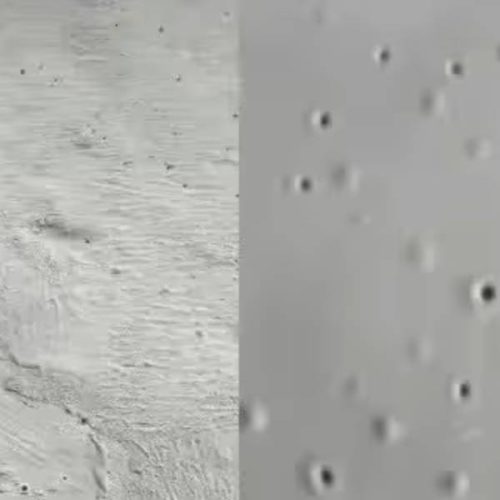Common Waterproofing Coatings and Polyaspartic Polyurea Coating
Waterproofing coatings are essential materials for home improvement and are also used in various infrastructure projects, including underground work and roof leak repairs.
What is a Waterproofing Coating?
A waterproof coating is an amorphous material (liquid, viscous substance, powder, or liquid powder mixed on-site) that, when applied on-site by brushing, scraping, wiping, spraying, or other methods, can cure on the surface of a structure to form a waterproof membrane layer. Thus, waterproof coatings are semi-finished products that require professional application on-site to achieve true waterproof functionality.
Characteristics of Waterproof Coating
- Easy to apply without heating, adaptable for molded parts.
- Forms a seamless, continuous waterproof membrane layer, reducing the risk of leakage; leaks are easy to detect and repair.
- Can be applied through spraying for faster construction.
There are many types of waterproof coatings, each with specific applications, varying brands, and quality levels. So, how can we choose the right waterproof coatings for decoration and construction?
Types of Common Waterproof Coatings and Key Selection Considerations
Rubberized Polyaspartic Waterproof Coating
This coating is made from polyaspartic, softened oil, rubber, and other key components, heated and mixed with fillers to create a polyaspartic waterproof coating. Features include high self-healing, puncture resistance, water resistance, and high elongation. Used for a variety of new construction or maintenance projects. The most common form is non-curing rubberized polyaspartic waterproofing coatings, which can combine with coiled materials to form a composite system. When choosing this type, high coil adhesion and solvent-free, eco-friendly options should be prioritized.

Water Emulsion Polyaspartic Waterproof Coating
This coating uses emulsified polyaspartic as the base, combined with other quality latexes and additives. It’s generally used for roads, bridges, non-exposed roofs, basements, and tunnels. Main features include excellent waterproofing, corrosion resistance, and resistance to chlorine ion permeability, as well as fast drying. In projects with underground sidewalls, the primary consideration should be the adhesion of polyaspartic waterproofing coatings to the substrate and to other layers within a composite system, as this adhesion is crucial for determining the applicability of polyaspartic coatings.
Polymer Cementitious Waterproofing Coatings
Made from polymer emulsion (e.g., acrylate or VAE emulsion) and a mix of additives combined with cement and graded sand, this two-component coating is often used in bathrooms, kitchens, and balconies. Key features are excellent adhesion to concrete, environmental friendliness, and strong adhesion to tiles. For indoor use, environmental safety is a primary consideration, along with minimizing tile detachment risk on vertical surfaces.
One-Part Acrylic Waterproof Coating
This coating is made from pure acrylic polymer emulsion and various additives in a water-based formulation. Commonly used for exposed projects like metal roofs, it features excellent weather resistance, strong metal adhesion, flexibility at low temperatures, and acid and alkali resistance. When choosing this product, understand the difference between pure C emulsion and phenyl C emulsion, as pure C emulsion is significantly more resistant to weathering. Additionally, look for water absorption rates below 10%.
Polyurethane Waterproof Coating
Composed of isocyanate, polyether, catalysts, additives, and fillers, this moisture-curing coating offers high strength, elongation, and water resistance. It's commonly used indoors in bathrooms, on roofs, in basements, and in infrastructure projects. Consulting professionals is advisable to select the right polyurethane coating for different applications.

Polyaspartic Polyurea Waterproof Coating
A modified prepolymer made from isocyanate and polyaspartic acid ester, this multi-component coating is less reactive than traditional aliphatic amine resins. Key characteristics include easy application (by hand-brushing, rolling, or troweling), excellent low-temperature resistance (down to -35°C without cracking), and superior weather, UV, and aging resistance. Typically used for roofs, kitchens, bathrooms, basements, and infrastructure. After 4,000 hours of QUVA testing, it retains over 95% of its performance, making it ideal for long-term outdoor use.
Feiyang has been specializing in the production of raw materials for polyaspartic coatings for 30 years and can provide polyaspartic resins, hardeners and coating formulations. Some of our polyaspartic coating formulations: Polyaspartic Coating
Feel free to contact us: marketing@feiyang.com.cn
Our products list:







